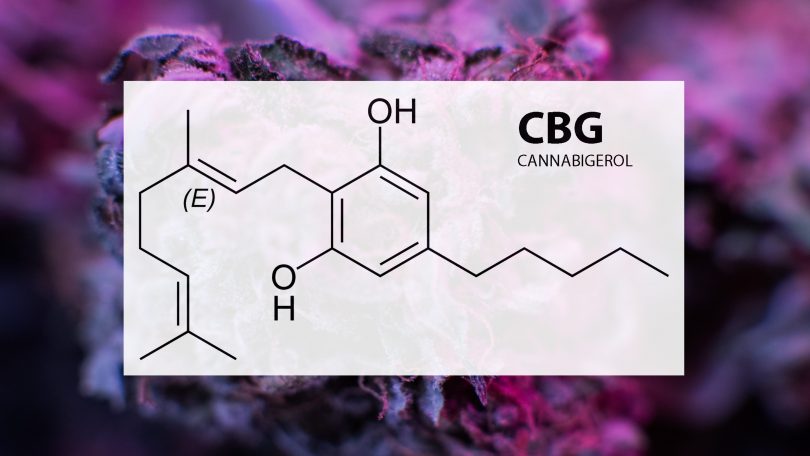Thanks to the 2018 farm bill, hemp is once again being grown on a national scale. And one side-effect of this progressive step has been the rapid growth of public interest in CBD.
CBD has become one of the most searched terms on the internet thanks to its much-publicized health benefits combined with the fact that it’s non-psychotropic, meaning it doesn’t get you high like THC.
But it doesn’t stop there. There are over 100 other cannabinoids – many, if not all, with suspected therapeutic potential – that scientists generally know very little about. One cannabinoid that we do have a few studies on is cannabigerol, or CBG.
CBG is widely predicted to be the next big trend in the hemp/cannabis industry. But what do we actually know about this cannabinoid?
Looking to buy wholesale CBG flowers? Subscribe to the ‘CBD Flowers Business‘ newsletter, and get the best prices on ‘White Whale’ CBG Flower (15% CBGa). Click HERE to subscribe!
Looking to try CBG Flowers? Subscribe below to the CBD Flowers Weekly, where this week we are bringing you exclusive deals on CBG flowers!
What is CBG?
CBGA has been known about since the 1960s when it was discovered by Raphael Mechoulam and one of his partners, Yehiel Gaoni. It was then found to be the precursor to all other cannabinoids. This is why CBGA, the version of CBG that still has its carboxyl acid group, is known as the “mother” of cannabinoids.
Specifically, CBGA (cannabigerolic acid) is a direct line to three main cannabinoids: tetrahydrocannabinolic acid (THCA), cannabidiolic acid (CBDA), and cannabichromenic acid (CBCA). Once exposed to heat or light in process known as decarboxylation, THCA, CBDA, and CBCA will shed their carboxyl acid group and become THC, CBD, and CBC, respectively.
When it comes to CBGA though, certain enzymes break it down and it is immediately converted to THCA, CBDA, or CBCA. This is why more THC means less CBG, because of the unique way these compounds interact and are synthesized.
Because of this, plants that do covert to CBG will have their highest cannabigerol content early in the flowering stage. In most cultivars, if left to fully mature, almost all CBG will be converted into other cannabinoids. However, as mentioned above, some hemp strains naturally produce high amounts of CBG rather than CBD or THC.
CBG vs CBD: What’s the Difference?
As mentioned above, CBD doesn’t have the same psychoactive effects as THC. Rather, it’s reported to relax muscles and calm the mind. This makes it potentially useful for treating anxiety and inflammation. CBD has also been shown to be antipsychotic and have possible anti-cancer properties.
Cannabigerol, meanwhile, is similar to CBD in that it also is non-psychotropic. However, there’s very little research into the effects of CBG on humans, though interest is growing as it is thought by cannabis researchers that many non-psychoactive cannabinoids may have many unique clinical applications.
The CBD Flowers Business Newsletter
Effects and Possible Health Benefits
What we have learned from the limited number of studies available is that CBG displays a multitude of potential health benefits. It may have neuroprotective properties, as well as being an antioxidant. It also showed anti-inflammatory qualities, particularly when it came to relieving the symptoms of Inflammatory Bowel Disease.
It also looks to be antibacterial and antifungal. It has been used to successfully treat antibiotic resistant strains of bacteria such as MRSA, as well as various fungal infections. The latter is based on anecdotal evidence.
Some research suggests is stimulates appetite and may be useful in the treatment of gastrointestinal disorders and lowering intraocular pressure in glaucoma patients. It has been used to treat depression. It also shows promise in fighting the growth of colorectal cancer cells, however, more studies are certainly needed before any concrete benefits can be proven.
Is CBG going to be as popular as CBD?
The massive interest is CBD has been unprecedented. While some thought it would just be another fad, demand for CBD products is continuing to grow and the market is predicted to be worth over $20 billion by 2022.
It’s seems unlikely that the CBG market will reach these astronomical figures given CBD’s head start, although there will certainly be an increased demand for many novel cannabinoids over the coming years, with CBG sure to be one of the most popular.
But interest in both CBD and CBG are a part of something bigger. As the public’s perception of cannabis shifts further towards the plant’s therapeutic properties, an entirely new sector focused on nutraceutical consumer products is emerging.
Combined with growing disillusion with mainstream medicine and rising chronic health conditions, the desire for new cannabinoid and botanical-based solutions will only increase. CBD and CBG will both be very important in this new sector.
Why CBG Flowers Could Become The Trendiest Bud of 2020
Summary
Of over 100 cannabinoids produced by the cannabis plant, CBG is one of the most exciting. Partly because it’s the precursor to all other cannabinoids, and partly because early research suggests it may have positive effects in treating a number of conditions.
While CBD has become widely popular over the last couple of years, cannabigerol is still relatively unknown. However, reliable CBG genetics are now becoming more common and farmers are starting to produce premium CBG-rich hemp plants on a wide scale.
Over the coming years, CBG, the mother of all cannabinoids, will play a big part in an even bigger movement that is recognizing the value of cannabinoids and other plant-derived medicines.
Looking to try CBG Flowers? Subscribe to the CBD Flowers Weekly Newsletter, where this week we are bringing you exclusive deals on CBG flowers!










Lets hope more research is done soon on how CBG can help treat various ailments